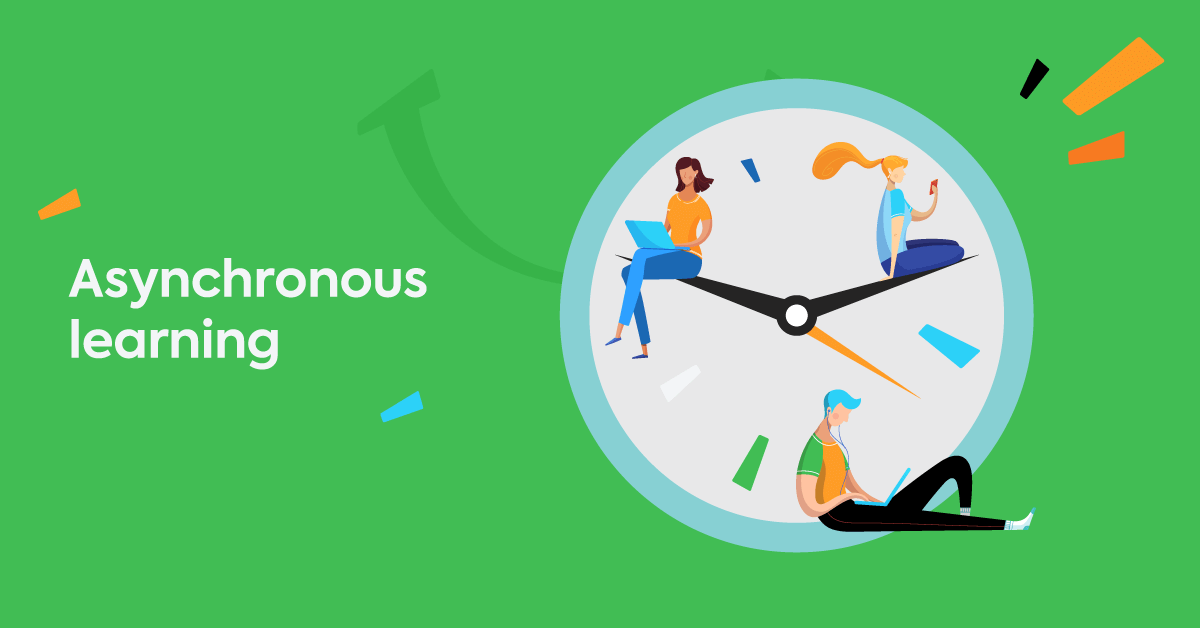Navigating the Educational Frontier: Exploring Asynchronous Learning – Benefits, Challenges, and Examples

Introduction
In the dynamic landscape of education, asynchronous learning emerges as a transformative paradigm, redefining how individuals acquire knowledge and skills. This comprehensive article delves into the concept of asynchronous learning, unraveling its definition, exploring its benefits, addressing challenges, and presenting real-world examples that showcase its diverse applications in the realm of education.
Section 1: Unveiling Asynchronous Learning
1.1 Defining Asynchronous Learning:
- Asynchronous learning refers to an educational approach where learners engage with instructional materials and complete learning activities at their own pace and time. Unlike synchronous learning, which occurs in real-time, asynchronous learning provides flexibility, allowing students to access content when it suits their schedules.
1.2 Key Characteristics:
- Asynchronous learning is characterized by self-paced modules, pre-recorded lectures, discussion forums, and collaborative tools that enable students to interact with course content and peers without the constraints of simultaneous participation. This flexibility caters to diverse learning styles and accommodates learners with varying schedules.
1.3 Evolution of Asynchronous Learning:
- The evolution of technology, especially the internet and digital tools, has been a catalyst for the rise of asynchronous learning. From early forms of correspondence courses to modern online platforms, asynchronous learning has evolved to encompass a wide range of educational experiences.
Section 2: Benefits of Asynchronous Learning
2.1 Flexibility and Accessibility:
- One of the primary benefits of asynchronous learning is flexibility. Learners can access course materials at any time, accommodating work schedules, time zone differences, and personal commitments. This flexibility enhances accessibility, making education more inclusive.
2.2 Self-Paced Learning:
- Asynchronous learning allows individuals to progress through the material at their own pace. This self-paced approach caters to diverse learning speeds and styles, empowering students to delve deeper into challenging topics or move quickly through familiar concepts.
2.3 Global Collaboration:
- With asynchronous learning, students from around the world can collaborate seamlessly. Discussion forums, collaborative documents, and virtual group projects facilitate global interactions, fostering a rich diversity of perspectives and experiences.
2.4 Lifelong Learning Opportunities:
- Asynchronous learning promotes lifelong learning by removing traditional barriers to education. Professionals seeking to upskill or individuals pursuing education while juggling familial responsibilities can engage in learning without compromising other aspects of their lives.
Section 3: Challenges in Asynchronous Learning
3.1 Lack of Real-Time Interaction:
- One of the challenges of asynchronous learning is the absence of real-time interaction. While forums and messaging tools facilitate communication, the spontaneous exchange of ideas that occurs in a live classroom setting may be limited.
3.2 Motivational Challenges:
- Asynchronous learners need strong self-motivation and discipline. The absence of regular class meetings and deadlines may lead to procrastination, making it crucial for individuals to stay motivated and actively participate in the learning process.
3.3 Technological Barriers:
- Access to technology and digital literacy are prerequisites for effective asynchronous learning. Students facing technological barriers or lacking essential digital skills may encounter difficulties navigating online platforms and fully participating in the educational experience.
3.4 Isolation and Limited Social Interaction:
- Asynchronous learners may experience a sense of isolation due to the lack of real-time social interactions. While virtual forums provide a platform for discussion, the absence of face-to-face communication can impact the sense of community in a learning environment.
Section 4: Real-World Examples of Asynchronous Learning
4.1 Online Degree Programs:
- Universities and colleges worldwide offer fully online degree programs that utilize asynchronous learning. Students can access lectures, participate in discussions, and submit assignments without the need to attend physical classes, providing a flexible pathway to higher education.
4.2 Massive Open Online Courses (MOOCs):
- MOOCs are a prominent example of asynchronous learning. Platforms like Coursera, edX, and Udacity offer a vast array of courses where learners can engage with video lectures, interactive quizzes, and discussion forums at their own pace, often free of charge.
4.3 Corporate Training Modules:
- Many organizations employ asynchronous learning for employee training. Through learning management systems (LMS), employees can undergo training modules, watch instructional videos, and complete assessments independently, allowing companies to upskill their workforce efficiently.
4.4 Virtual Workshops and Webinars:
- Asynchronous learning extends to virtual workshops and webinars where participants can access recorded sessions, engage in discussions, and complete supplementary materials on their own time. This format accommodates diverse schedules and enables widespread participation.
Section 5: The Future of Asynchronous Learning
5.1 Integration of Emerging Technologies:
- The future of asynchronous learning is intertwined with emerging technologies. Artificial intelligence, virtual reality, and augmented reality are poised to enhance the asynchronous learning experience, providing immersive and interactive educational opportunities.
5.2 Personalized Learning Experiences:
- Advancements in data analytics and machine learning will contribute to personalized learning experiences in asynchronous settings. Adaptive learning platforms will tailor content to individual needs, optimizing the learning journey for each student.
5.3 Hybrid Learning Models:
- Hybrid learning, combining both asynchronous and synchronous elements, is likely to become more prevalent. This model offers the benefits of flexibility while incorporating real-time interactions, striking a balance between self-paced learning and live engagement.
5.4 Continuous Evolution and Innovation:
- Asynchronous learning will continue to evolve, driven by the ongoing quest for innovation in education. The integration of new pedagogical approaches, responsive platforms, and collaborative tools will shape the landscape of asynchronous learning in the years to come.
Conclusion
In conclusion, asynchronous learning stands as a transformative force in education, offering flexibility, accessibility, and global collaboration. While challenges such as limited real-time interaction and motivational issues persist, the benefits and real-world examples illustrate the significant impact of asynchronous learning. As technology advances and educational paradigms continue to evolve, asynchronous learning will play a pivotal role in shaping the future of education, providing diverse learners with opportunities for lifelong learning and personal growth.







